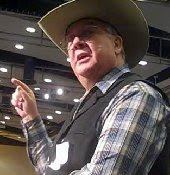Samuel Johnson said: "Hell is paved with good intentions." It seems that saying applies to unhappy independent service station owners in California today. They made it a through a down turn in the economy and barely survived a recession that is still taking its toll.
Then along comes the bad news in the form of inaction by the California Air Resources Board (CARB) on the letter from Governor Schwarzenegger requesting a delay or holiday in the implementation date set for the Enhanced Vapor Recovery Phase II regulation.
Air Quality Management District personnel have been out in force in the field for the last 10 days. They have been writing up their Notices of Violation to any service station property owner not meeting the mandated April 1, 2009 deadline.
Collateral damage has been caused in the form of gas stations and truck stops being forced to lock up their gasoline pumps or worse yet shut down their whole facility. By CARB’s own count about 5% of the gas stations, designated as Gasoline Dispensing Facilities (GDF), have already done just that.
The number of stations being reported as being in compliance by CARB and the Air Districts are confusing at best.
In some cases stations with pulled permits are already being counted as being in compliance when in fact they have not yet been fully certified. A good faith effort apparently suffices just to make their numbers look better.
By any count almost 40% of the 11,500 California gas stations have not fully complied with the EVR Phase II regulation. Of that number about 1,000 are expected to hang up their nozzles for the last time and lock up their pumps by December 31, 2009. That is the drop dead date by which station owners will have to make the investment to install the vapor enhancement equipment or be shut down by the air districts.
Fines are being imposed based on the level of compliance and volume of gasoline pumped ranging anywhere from $1,000 to $4,000 per month for each station.
Apparently this was meant to serve as notice by the regulators to recalcitrant owners, who did not heed the warnings given out as early as 2000, that the rule would be enforced. Fact of the matter is that the regulation passed through the approval process by CARB and the California legislature without those technologies even being in place.
Major oil companies jumped on the band wagon early by insisting that the law be enforced if they were going to be making the required investment. The service station equipment manufacturers went to work and one system was approved by CARB in 2005. As late as 2008 two more systems were certified and at this writing one more is in the works to be approved by CARB.
As magic would have it each system became more economical than the one before. It was even made it possible to retrofit the nozzles being used by stations equipped with the Phase I equipment. The earlier approved system was only able to interface with its own equipment and was not adaptable to the other systems. Initially station owners had to make a choice to replace their whole system or wait it out until 2008 to retrofit their existing nozzles and install the scrubbers with the CARB certified equipment made to fit their own equipment specifications.
Up jumped the devil just as things were beginning to look up for the independent service station owners. The recession came along with the resulting financial tightening of the credit market. Station owners in the process on obtaining loans were put on hold and told to wait until the banking situation straightened itself out.
Accusations are now being made by regulators and clean air organizations such as the Sierra Club that this group of station owners is not doing their part for cleaner air in California. The station owners are citizens, who live and breathe the same air just like the rest of their fellow Californians. In the past they have made improvements to their facilities to aid in the clean air effort and have plans to continue to do so in the future.
In-Station Diagnostic (ISD) portion of the law takes affect in a year and the EVR Phase II compliance date could have easily been coincided with the implementation of that program. One program interfaces with the other when both of them installed at the same time could save the owners money.
Also starting in 1998 new automobiles in California had Onboard Refueling Vapor Recovery (ORVR) systems installed on them. The ORVR system captures the gasoline vapors that are displaced when gasoline is dispensed to the vehicle tank and stores those vapors in a canister filled with activated carbon. When the vehicle engine is started, gasoline vapors stored on the carbon are purged and burned in the engine. The ORVR system on new cars interferes with the ISD system creating false readings that throws the system into alarm at the station.
As of 2008 about 65% of the automobiles and light trucks in California are equipped with the ORVR system and about 94% of them will be so equipped in another ten years. In other words the ORVR and the EVR Phase II system will overlap each other recapturing the gasoline vapors during fill ups. California station owners will have spent a lot of money for little gain all in the name of attaining cleaner air.
Reasonable people should be making reasonable choices and this time Californians are going to get hurt right where it will hurt them the most – in their pocket book.
It’s time for each of us to open our windows and stick out our heads and yell like broadcaster Howard Beale did in the movie Network: “I’m mad as hell, and I’m not going to take this anymore”.
Subscribe to:
Post Comments (Atom)

No comments:
Post a Comment